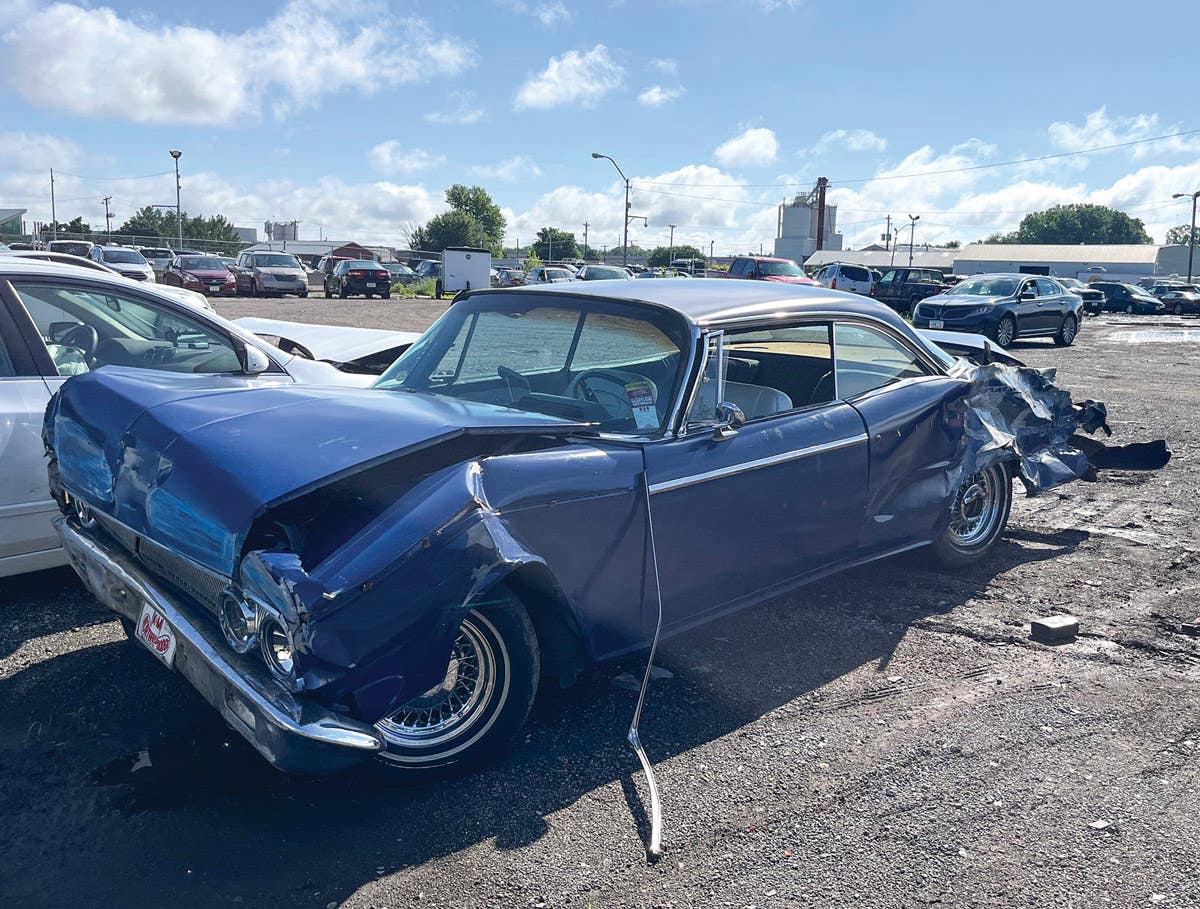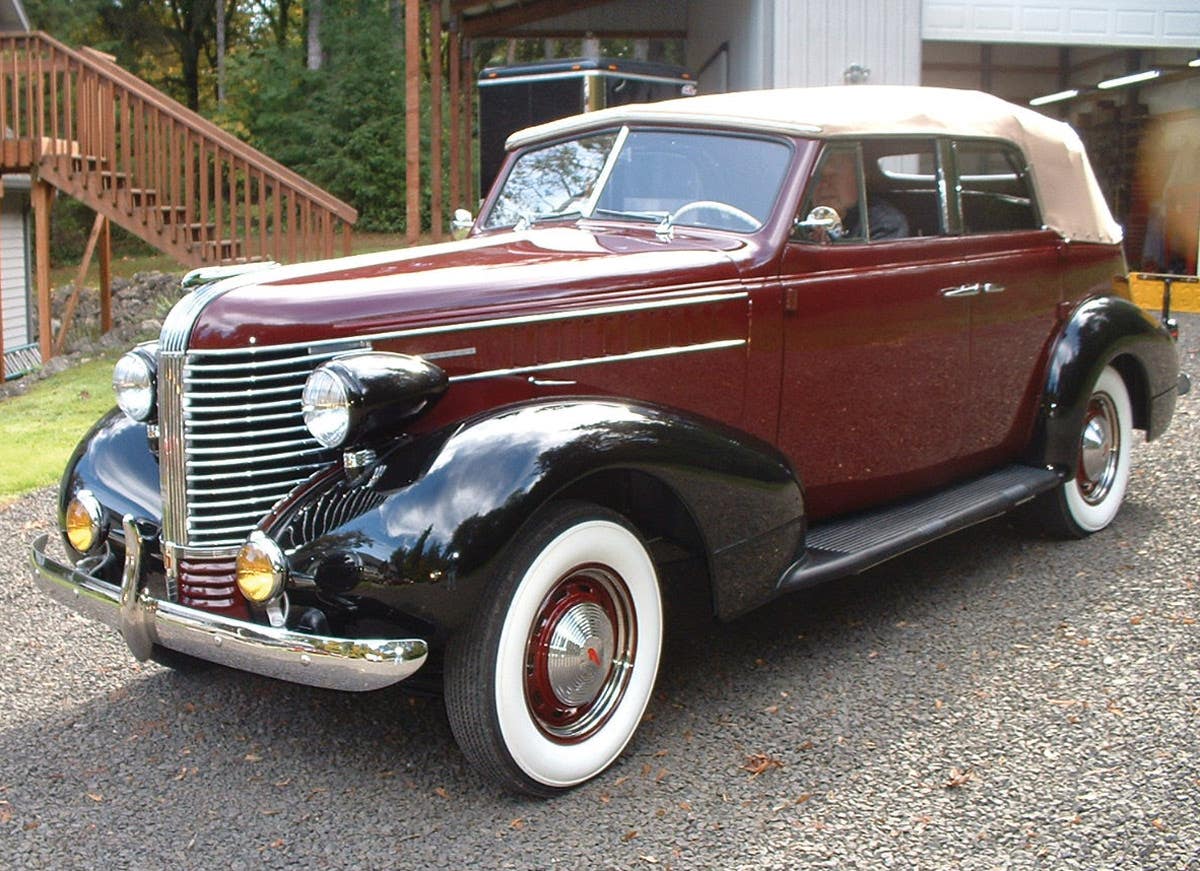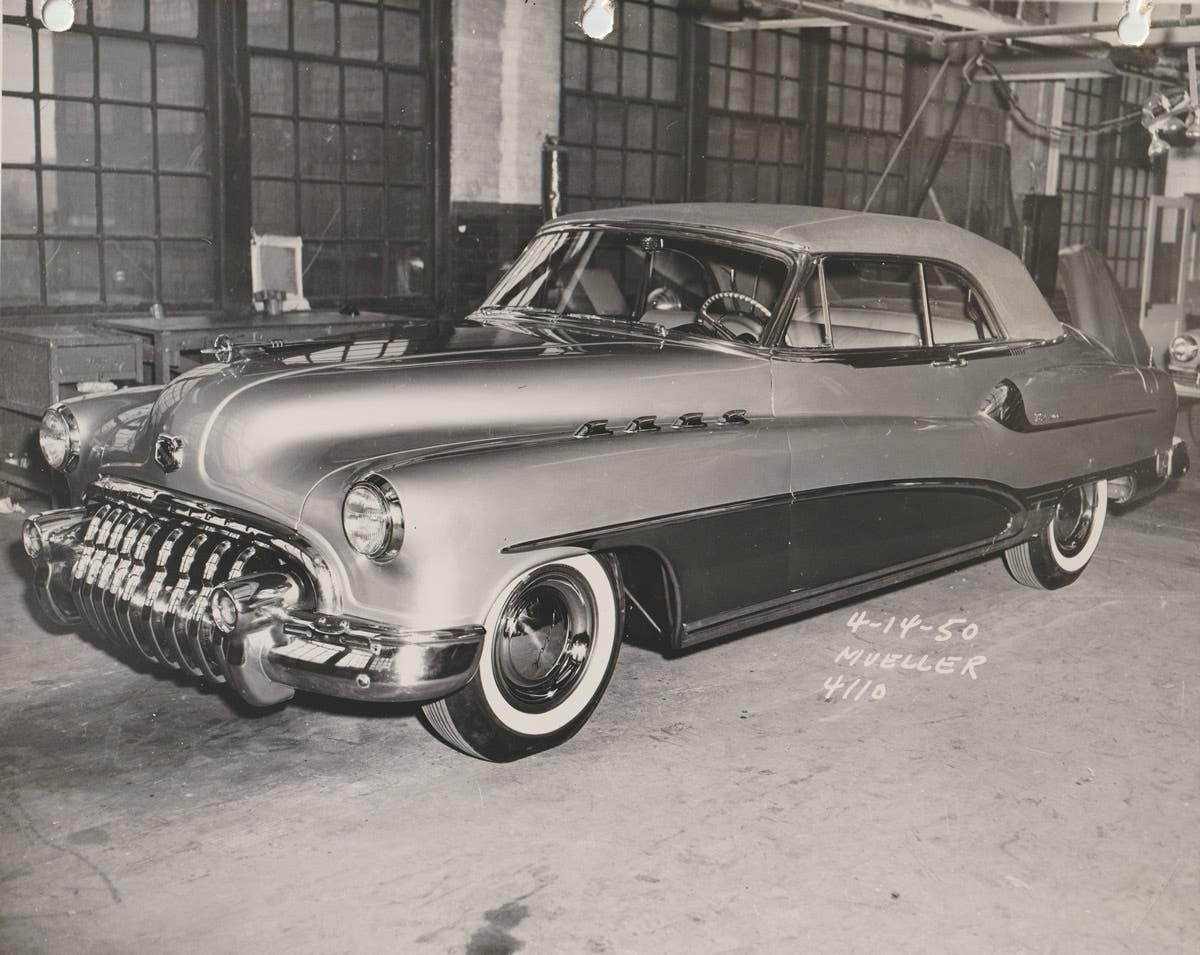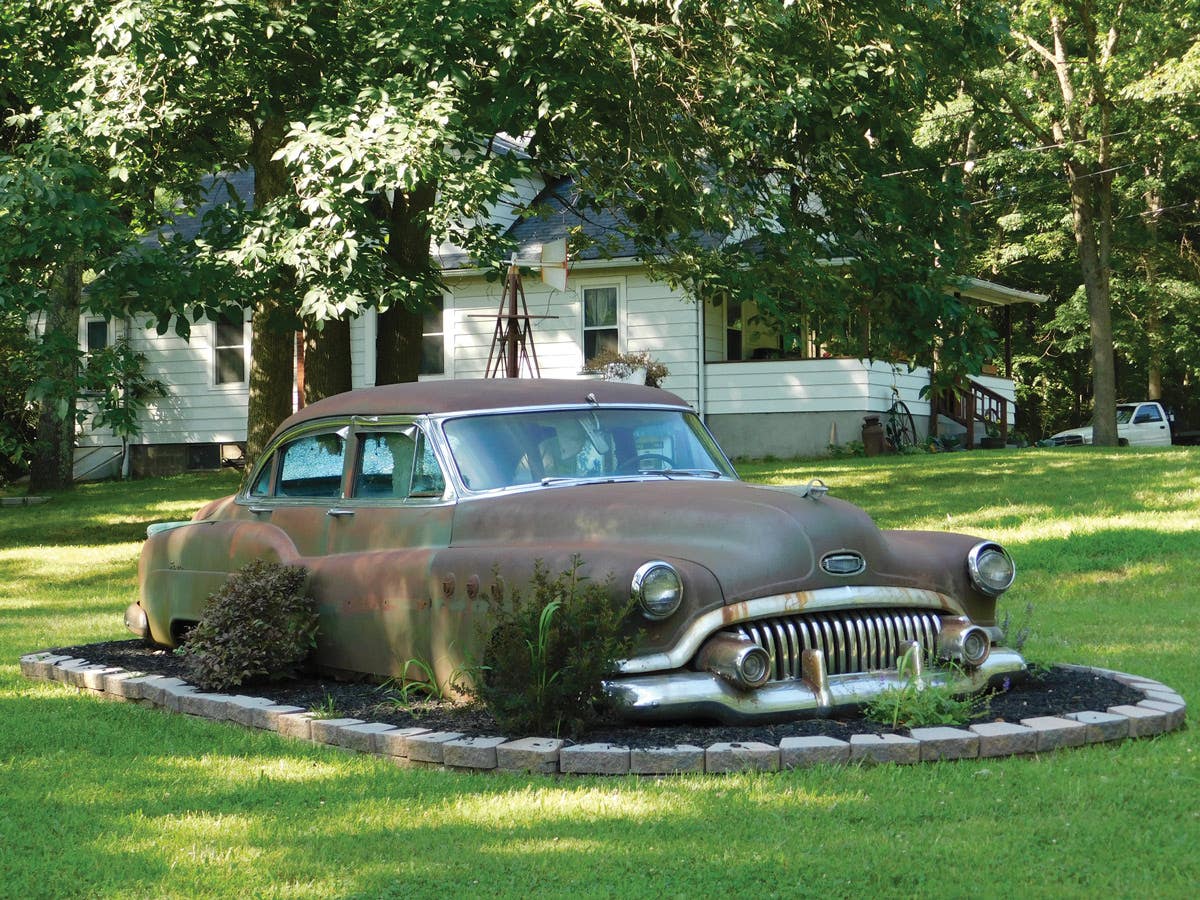Buick find: Gear head buys his ‘first love’
Almost every collector remembers the first car they drove, or the first car that brought them into the hobby as a kid. Very few of those collectors have the chance to own one of those special cars from their past, but count Leonard Anderson among the lucky few who owns the car that was both to him.
Reader buys 1932 Buick 96S coupe that transformed him into a ‘gear head’ from youth
By Angelo Van Bogart
Almost every collector remembers the first car they drove, or the first car that brought them into the hobby as a kid. Very few of those collectors have the chance to own one of those special cars from their past, but count Leonard Anderson of Mt. Carroll, Ill., among the lucky few who owns the car that was both to him.
“It was 1957 and I was 13 years old,” Anderson said. “The first car I ever drove was this 1932 Buick owned by my best friend’s grandfather (Lars Mohagen). He asked if I wanted to learn to drive his car, and I thought I was king of the hill that day.
“He said, ‘Do you want to go for a ride?’ so I said, ‘Yeah.’ He knew me but he didn’t know I didn’t know how to drive, so I moved over and he said, ‘I will show you how this works.’ He was just very patient with me and I got the hang of it pretty quick, and we had fun tooling around the countryside.
“I fell in love with cars that day,” Anderson continued. “It started my love affair with the automobile.”
The 1932 Buick that Anderson first drove around Elbow Lake, Minn., as a newly minted teenager 55 years ago was a pretty rare ride from new. Just 586 Country Club Coupes of its type (Model 32-96S) were built in the 90 Series that Buick used to prove bigger was better. As part of the largest and most expensive Buick line, the Series 90 cars had a 134-inch wheelbase that was 8 inches longer than the next-step-down Series 80; 16 inches longer than the sophomore Series 60; and 20 inches longer than the entry-level Buick Series 50 for 1932. Standard equipment on the Series 90 included wire wheels, dual sidemount spare tires and wheels, a Delco-Remy ignition system, mechanical bakes, Wizard Control freewheeling, an automatic clutch, a Silent Synchromesh transmission, Ride Control and Zerk chassis lubrication.
“The 134-inch wheelbase is the best feature of it all,” Anderson says of his Series 90 coupe. “They stretched the 90 Series for a much better ride, and gained an extra foot in the rumble seat area, basically. It rides beautifully; it’s a fun-riding car.”
In addition to several chassis lengths, Buick offered a number of engines, all straight-eights. Series 50 models received an overhead-valve engine of 230.4 cubic inches and 82.5 hp; Series 60 models were powered by a 90-hp overhead-valve eight of 272.6 cubic inches; and for the bigger Series 80 and Series 90 models, Buick installed its biggest and best, a 113-hp overhead-valve straight-eight of 344.8 cubic inches.
The Series 90 had additional chassis features and a longer chassis and body, but its appearance was shared through the Buick line and included new hood doors in place of the long-used louvers, the elimination of sun visors on closed models and a 10-degree rearward windshield slope. The grille had a more tapered shape with a narrower base and the car wore longer, streamlined open clamshell-style fenders with that classic shape so desired by collectors today and that were so en-vogue in 1932. As beautiful as the Series 90 Buick coupe was considered in 1932, such a car was seen by most as simply a used car during Anderson’s first drive.
“Back in the ’50s, a car like that could have gone either way and he is probably the one that saved that car,” Anderson said of his friend’s grandfather, Lars. Even though the car was a fine original when Mohagen bought the Buick, Anderson said “he probably paid a couple hundred bucks for it.”
When new, the 4,470-lb. Buick 96S Country Club Coupe was priced at $1,740, putting it one step above the least-expensive Series 90 model, the four-passenger Sport Phaeton (Model 32-95), by $65. Other Series 90 Buicks went up in price to the $2,055 top-of-the-line seven-passenger limousine (Model 30-90L). Adding to the Country Club Coupe’s $1,740 base price were such options as metal covers for the sidemounts and a clock in the glove box door, both of which Anderson’s coupe sports.
Before Anderson finally landed the coupe in 2010, he went through a string of vintage cars, ownership of each inspired by the drive behind the wheel of the Buick owned by his friend’s grandfather.
“My dad was a rural mail carrier and the area was loaded with cars parked behind barns,” Anderson said. “The farmers would give these cars to me and I would get them home and get them running.
“Back then, in the ’50s, before I had my license, I was buying Model A’s for $10. We went to junk yards and bought (1930s) Fords for about the scrap price.”
After a string of inexpensively purchased cars that he fixed up and sold, Anderson worked up to Full Classics and joined the Classic Car Club of America. Anderson had some pretty impressive cars as a young man, but none of them were that Buick in which he learned to drive.
“I joined the CCCA back in the 1962 and had a 1936 Cadillac convertible coupe and a 1941 Packard 180,” he said, adding, “I bought my 1936 Cadillac and I had a hard time putting together the $2,000. This was in the 1960s; you could buy a Duesenberg for $5,000-$10,000, so it’s funny how the hobby changed.”
While Anderson continued to drive and enjoy vintage iron of all types even after he moved to his current Illinois home, his friend’s grandfather continued showing and driving the Buick in what is estimated to be hundreds of parades around Elbow Lake and Barrett, Minn., beyond the 1950s. When Lars Mohagen passed away, his son Harold continued driving the Buick in parades, eventually storing it at the Historical Society Museum in Elbow Lake. The Buick coupe was such a fixture in Western Minnesota, its transfer from the Mohagen family to Anderson in 2010 warranted a large photo in the Barrett, Minn., newspaper.
“It was a big deal,” Anderson said of the title transfer. “Harold spent the whole day with me. It was an all-day event, lunch, paperwork, keys, it was pretty special. He wanted it to go to a good home.
“David, my best friend (and Harold’s nephew), wasn’t interested in the car. I asked him one more time and asked if he was sure if it was OK, and he said, ‘Harold fed you a lot and treated you like family.’”
Since buying the Buick that is so special to him, Anderson has kept the tradition of exposing children to the car around car shows and cruise nights in downtown Mount Carroll, Ill.
“I go to a car show and I have more fun talking to the young kids,” Anderson said. “I have no problem putting the kids in the rumble seat. They’re so fascinated by it. I let the kids see the car, see the steering wheel. An old car is meant to be enjoyed by all.”
In the case of this old car, it’s also meant to be a keeper.
“Any car I ever sold I wish I had back, but once you let it go, you think, ‘Why did I do that?’ This is a family car, it will be going down to my kids or grand kids. It’s a special car.”
If you love Buicks, check out: Buick – 1946-1960 Photo Archive by Byron Olsen
Got Old Cars?
If you don't subscribe to Old Cars Weekly magazine, you're missing out on the only weekly magazine in the car hobby. And we'll deliver 54 issues a year right to your mailbox every week for less than the price of a oil change! Click here to see what you're missing with Old Cars Weekly!
More Resources for Car Collectors:
- Classic car price guides, research, books, back issues of Old Cars Weekly & more
- Get expert restoration advice for your classic car
- Get car pricing, data and history all in one place
- Sign up for Old Cars Weekly's FREE email newsletter
- Need to buy or sell your classic car? Looking for parts or memorabilia? Search our huge online classified marketplace







